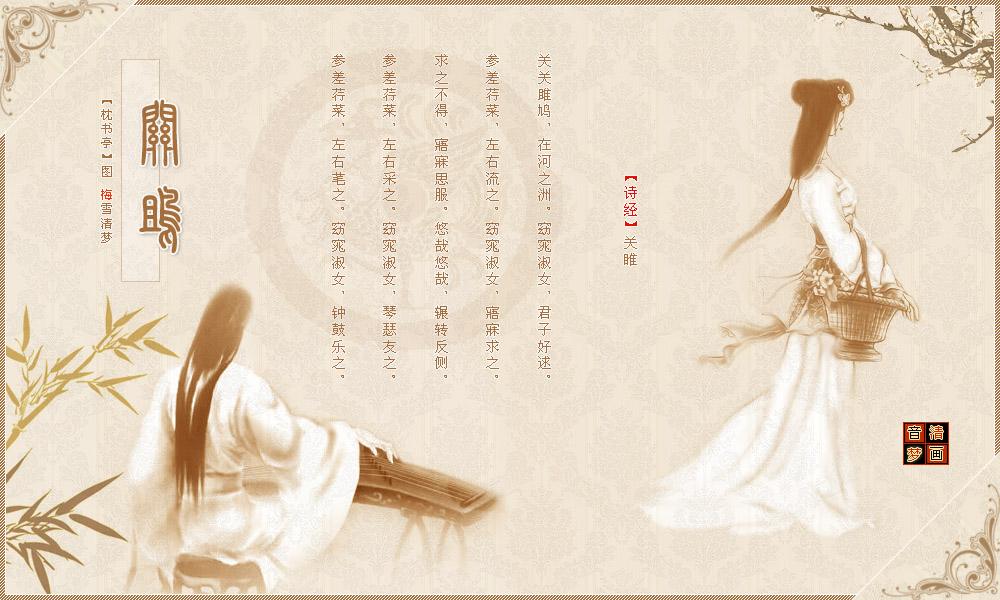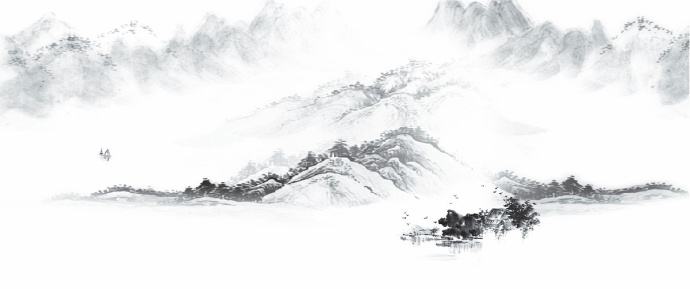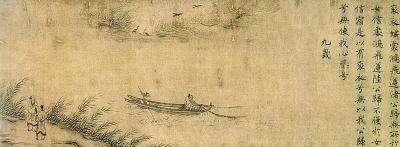The Magnificent “Three Hundred Poems”
3 min readBook of Odes is China’s first collection of songs and poems as well as the first Chinese folk literature. It collects 305 poems from the 500 years between the 1lth century BC(early years of the Western Zhou dynasty) to the 6th century BC(the middle of the Spring and Autumn period), so it was also known as Three HundredPoems. Book of Odes was called later largely thanks to the high praises of the Confucian scholars.
Book of Odes is classified with relevance to music. According to different music genres, Book of Odes is further divided into three parts, namely, Feng, Ya and Song.

When it comes to music genre, Feng means melody and belongs to local music. There are in total 160 Guo Feng (airs of states) from 15 fiefdom, namely, Zhou & South, Shao & South, Bei, Yong, Wei, Wang, Zheng Qi, Wei, Tang, Qin Chen, Hui, Cao, Bin.
These songs are the most valuable works in Book of Odes, most of them originated inthe Eastern Zhou. The love songs are the most delicate and excellent gem in ancient China’s literary treasure. Unlike “Feng”,”Ya”is the court music, which is further divided into Big Ya (Major Odes of the Kingdom) and Small Ya (Minor Odes of the Kingdom), which totaled 105 pieces.A1l the 31 pieces of “Big Ya”were mainly theworks of Western Zhou while the rest 74 “Small Ya”were from the last period ofWestern Zhou.”Song”is mostly the music for spirit sacrifices,i.e., the songs and music for nobles to do sacrifices.”Song”is unique in that it has slow yet solemn tones and its 40 works is further divided into 3 parts, namely of the “Song”of Zhou, Lu and Shang. It has been verified that the 31 Zhou Songs were created in the late Western Zhou while the 4 praise odes of Lu were dedicated to Duck Xi of LuState in the Spring and Autumn period. As for the 5 songs of Shang, since the age is still in disput, it is undecided yet.
Book of Odes describes many aspects of the politics, societies and life of thattime. Its themes are usually classified into the following: eulogy of ancestors’ great achievement, description of farming activities, plight of people, chant of love and marriage, happy gatherings and sad farewells, expression of sorrow, hatred, anger, resent, sarcasm, etc.

Most songs in Book of Odes are deep rooted in social reality, displaying a special artistic charm. First of all,3 techniques of expression, namely, fu (straightforward narrative), bi (explicit comparisons) and xing(implied comparisons), are used in a diverse, skillful and natural way, creating an artistic vision with interactive scenery and feelings. More importantly, the employment of clear and concise rhymes and symmetrical structures contribute greatly to theartistic conception, atmosphere, feelings, themes, the sense of music and rhymes.
Last but not least, the emergence of large number of vocabulary not only reflecte a wider knowledge of the authors on the objective and subjective worlds but also their acute observation and linguistic competence. The diversity of language forms makes Book of Odes highly expressive and full of life.

In general, Book of Odes signifies the starting point of the glory of ancient Chinese poetry. As an excellent mirror for people of lower class, the book has paved a road of realism. The traditions of implied comparisons, resentment, sarcasm and admonition have established the historical status of folk literature. The book proves that working people are not only the creator of social materials but also the architect of spiritual civilization. Book of Odes also provides precious experience in artistic styles and language skills for later generation, and symbolizes the high achievement of ancient Chinese literature.








